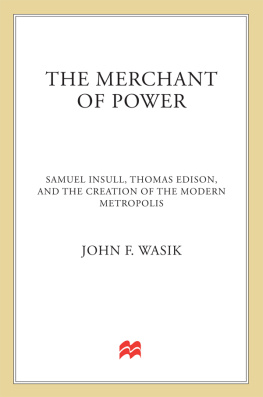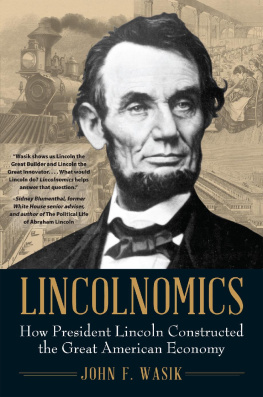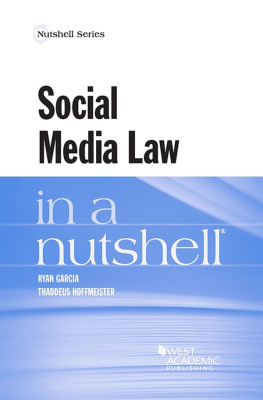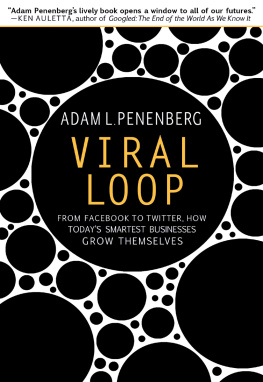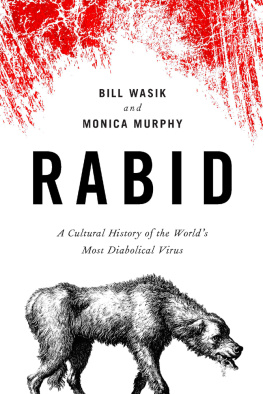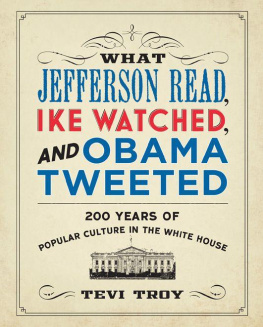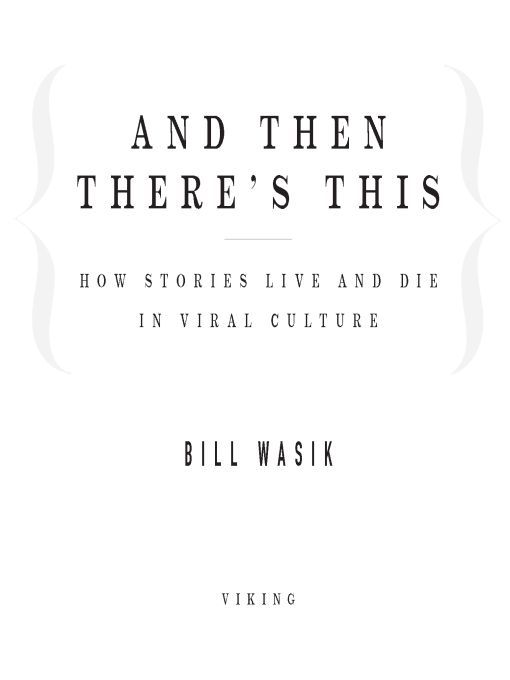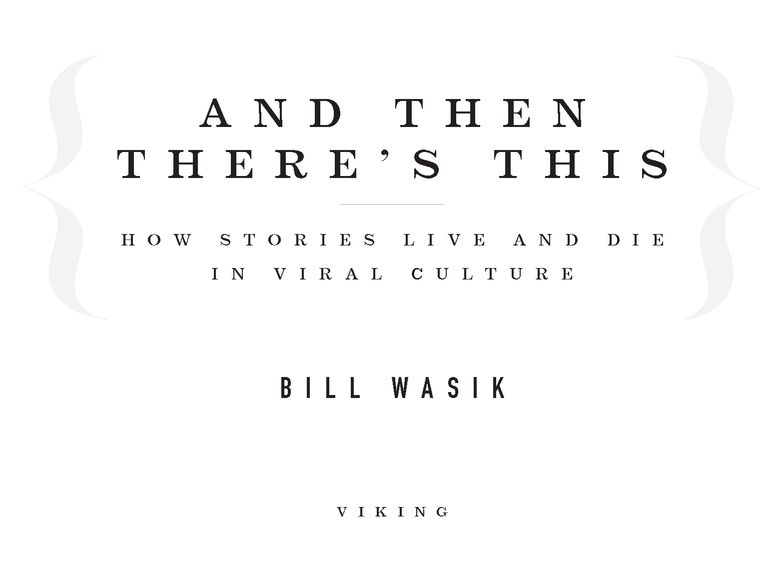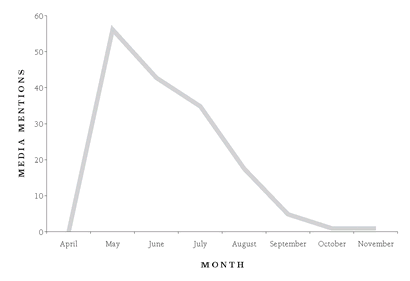Table of Contents
INTRODUCTION:
KEY CONCEPTS
THE NANOSTORY
I begin with a plea to the future historians, those eminent and tenured minds of a generation as yet unconceived, who will sift through our benighted present, compiling its wreckage into wiki-books while lounging about in silvery bodysuits: to these learned men and women I ask only that in telling the story of this waning decade, the first of the twenty-first century, they will spare a thought for the fate of a girl named Blair Hornstine. Period photographs will record that Hornstine, as a high-school senior in the spring of 2003, was a small-framed girl with a full face, a sweep of dark, curly hair, and a broad, laconic smile. She was an outstanding studentthe top of her high-school class in Moorestown, New Jersey, in fact, boasting a grade-point average of 4.689and was slated to attend Harvard. But as her graduation neared, the district superintendent ruled that the second-place finisher, a boy whose almost-equal average (4.634) was lower due only to a technicality, should be allowed to share the valedictory honors.
At this point, the young Hornstine made a decision that even our future historians, no doubt more impervious than we to notions of the timeless or tragic, must rate almost as Sophoclean in the fatality of its folly. After learning of the superintendents intention, Hornstine filed suit in U.S. federal court, demanding that she not only be named the sole valedictorian but also awarded punitive damages of $2.7 million. Incredibly, a U.S. district judge ruled in Hornstines favor, giving her the top spot by fiat (though damages were later whittled down to only sixty grand). Meanwhile, however, a local paper for which she had written discovered that she was a serial plagiarist, having stolen sentences wholesale from such inadvisable marks as a think-tank report on arms control and a public address by President Bill Clinton. Harvard quickly rescinded its acceptance of Hornstine, who thereafter slunk away to a fate unknown.
I stoop to shovel up the remains of Blair Hornstines reputation not to draw any moral from her misdeeds. Of the morals that might be drawn, roughly all were offered up at one point or another during the initial weeks after her lawsuit. She was just another member of a hyper-accomplished generation for whom getting good grades and doing good deeds has become a way of life, wrote the Los Angeles Times. The Philadelphia Daily News eschewed such sociology, instead citing more structural causes: With college costs skyrocketing, scholarship dollars limited and competition fierce for admissions, the road to the Ivy League has become a bloody battleground. MSNBCs Joe Scarborough declared that across the country, parents are suing when the ball doesnt bounce their childs way, while CNNs Jeffrey Toobin went somewhat more Freudian, branding her judge father as another example of lawyers... inflicting it on [their] children. Nonprofessional Internet pundits, meanwhile, were every bit as incisive. The girls father is a judge, wrote one proto-Toobin on MetaFilter, a popular community blog. Guess hes taught her too much about the legal system. Echoed another commenter: Behind every over-achieving student there are usually a pair of over-achieving parents who want their child to live up to their ridiculous expectations.
No, I offer up Blair Hornstine to history simply for the trajectory of her short-lived fame, the rapidity with which she was gobbled up into the mechanical maw of the national conversation, masticated thoroughly, and spat out:
FIG. 0-1BLAIR HORNSTINE (THE SPIKE)
This telltale spike, this ascent to sudden heights followed by a decline nearly as precipitousit is a pattern that will recur throughout this book, and it is one that even the casual consumer of mass media will surely recognize. To keep up with current affairs today is to suffer under a terrible bombardment of Blair Hornstines, these media pileons that surge and die off within a matter of months, days, even hours. Consider just one of the weeks (May 25 through June 1) that Blair Hornstine was being dragged through the streets behind the media jeep; tied up beside her were a host of other persons or products or things, in various states of uptake or castoffin the realm of politics, Pfc. Jessica Lynch (on her way down, as her rescue tale was found to have been exaggerated) and Howard Dean (on his way up in the race for president, having excited the Internet); in fashion, the trucker hat (on its way down) and Friendster.com (on its way up); in music, an indie-rock band called the Yeah Yeah Yeahs (down) and a new subgenre of emo called screamo (up); all these and more were experiencing their intense but ephemeral media moment during one week in the early summer of 2003.
We do not have an easy word to describe these transient bursts of attention, in part because we often categorize them differently based on their object. When this sort of fleeting attention attaches to things, we tend to call them fads; but this term, I think, conjures up too much the media-unsavvy consumer of an earlier era, while underestimating the extent to which our enthusiasms today are entirely knowing, postironic, aware. If there is one attribute of todays consumers, whether of products or of media, that differentiates them from their forebears of even twenty years ago, it is this: they are so acutely aware of how media narratives themselves operate, and of how their own behavior fits into these narratives, that their awareness feeds back almost immediately into their consumption itself.
Likewise, when this sort of transient attention falls on people, we tend to describe it as someones fifteen minutes of fame. But is celebrity really what is at work here? The majority of the tens of millions of people who pondered the story of Blair Hornstine never knew what she looked like, or cared. What they knew, instead, was how she fit handily into one or more of the various meanings imposed on her: the ambition-addled generation, the lawsuit-drunk society. Most people who remember Blair Hornstine today will recall her not by name or face but simply by roleas that girl, perhaps, who sued to become valedictorian. No name need even be invoked for her to do her conversational work.
In keeping with the entrepreneurial wordsmithery of the times, I would like to propose a new term to encompass all these miniature spikes, these vertiginous rises and falls: the nanostory. We allow ourselves to believe that a narrative is larger than itself, that it holds some portent for the long-term future; but soon enough we come to our senses, and the story, which cannot bear the weight of what we have heaped upon it, dies almost as suddenly as it was born. The gift we so graciously gave Blair Hornstine in 2003 was her fifteen minutes not of fame but of meaning.
VIRAL CULTURE
On May 27, 2003, during the same fitful weeks, I made up my mind to create a nanostory of my own. To sixty-three friends and acquaintances, I sent an e-mail that began as follows:


